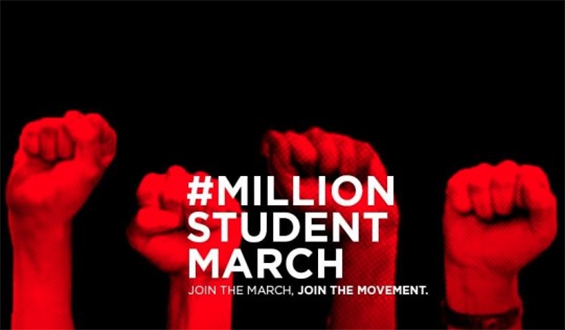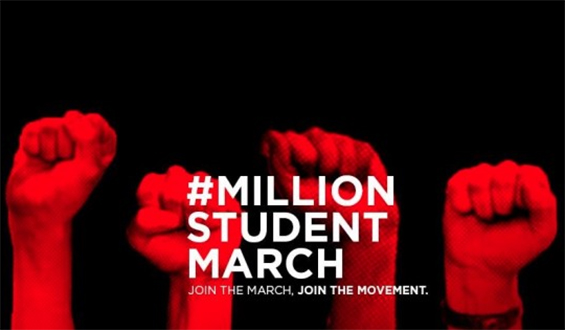
Starting last week, students across the United States held demonstrations on their college campuses to protest ever-increasing student loan debt while at the same time making a push for tuition-free campuses.
The Million Student March took place only two days after thousands of fast-food workers rallied across the nation in an effort to bring the minimum wage to $15 per hour and to gain union rights for the industry.
Photos and videos of the day made their way to Twitter, while #MillionStudentMarch became a worldwide trending hashtag as organizers said students at 110 colleges participated.
“Education should be free. The United States is the richest country in the world, yet students have to take on crippling debt in order to get a college education,” the organizers of Thursday’s event, dubbed the Million Student March, explain on their website. “We are united to fight for education as a human right.”
At the University of California Berkeley, hundreds of students gathered carrying signs that showed their individual student debt loads, which ranged from thousands of dollars to over $100,000.
Organizers of the event are looking for the creation of tuition-free public colleges, the cancellation of all student loan debt, and a minimum wage increase so that campus workers would be making at least $15 an hour, reports Curtis Skinner for Reuters.
Keely Mullen, one of the lead organizers of the event, hopes the movement will branch out to include things like fees, textbooks, and housing, as well as touching on issues that would affect university staff such as higher pay for adjunct professors, writes Casey Quinlan for Think Progress. Mullen is currently a student at Northeastern University in Boston. She expects to graduate with around $150,000 in student loan debt.
Data from the US Consumer Financial Protection Bureau suggests that the total amount of outstanding student loan debt in the country has more than tripled in a short period of time, reaching upwards of $1.2 trillion. The total was less than $600 billion in 2006.
Aside from mortgages, student loan debt is currently the largest source of consumer debt in the United States. Of the entire group of student loan borrowers, 7.5 million are behind in payments. The average borrower owes about $30,000 in student loan debt.
The issue is one that is frequently brought up by candidates on the 2016 presidential campaign trail. Earlier this year, President Barack Obama announced plans to offer enrollment at community colleges tuition-free. So far, that plan has been adopted in two states. Meanwhile, Democratic candidates Hillary Clinton and Martin O’Malley are pushing for a debt-free higher education, while Bernie Sanders is seeking the creating of a tuition-free public college.
Mark Huelsman, a senior policy analyst at Demos, compared the movement to the one seen with universal health care, which had been an issue for quite awhile until “a moment of consensus” came in 2008. Huelsman said the same thing is now happening with free college and debt-free college.




